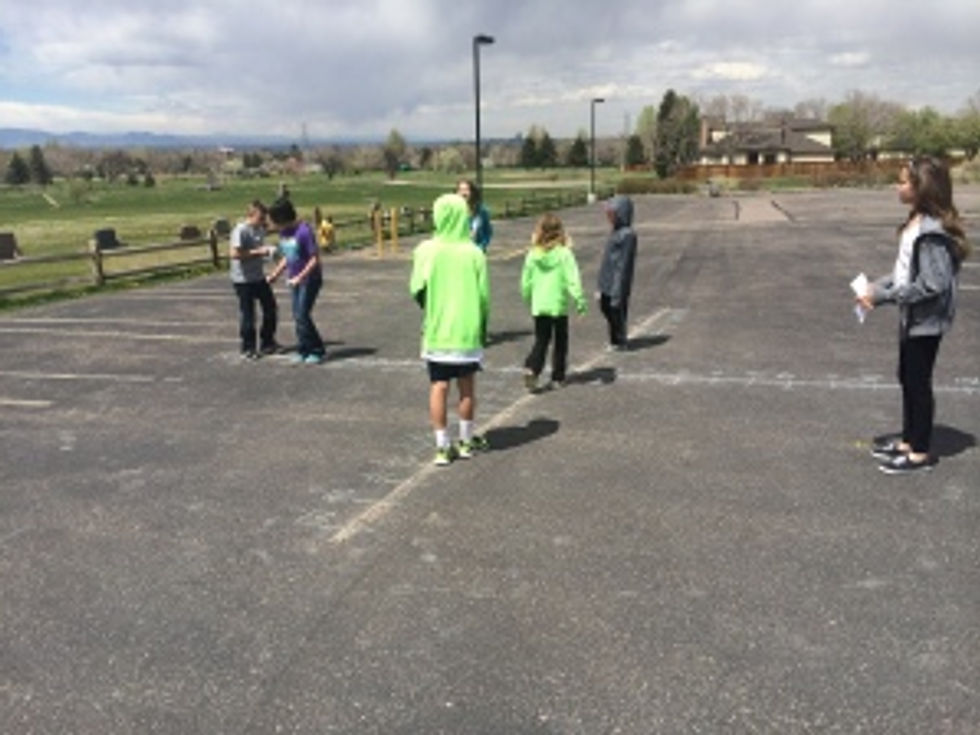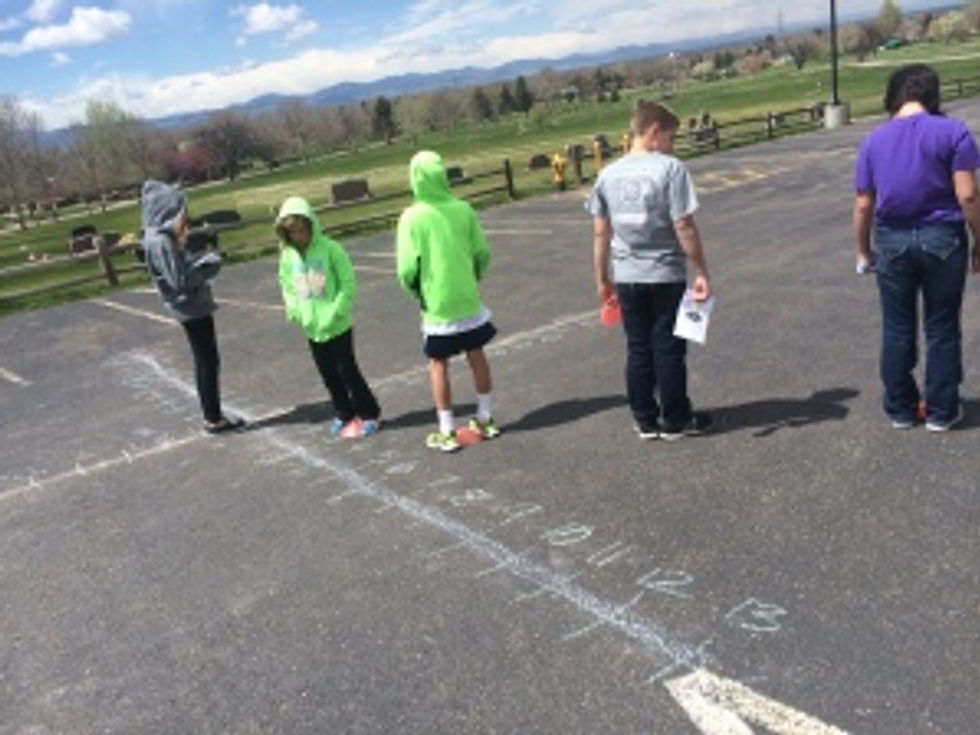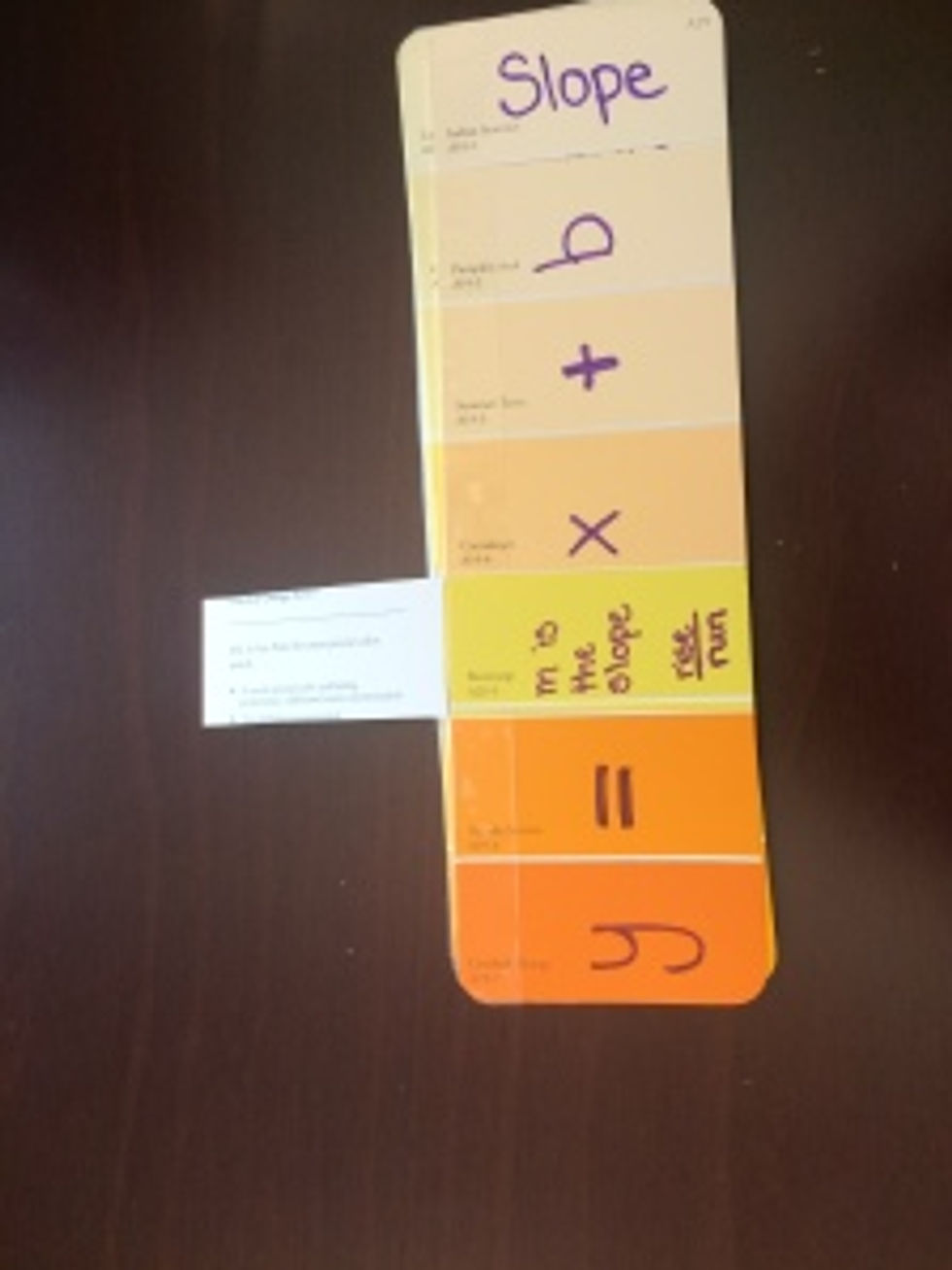Dreaming about coordinate planes: a moment of Anastasis Academy
- Kelly Tenkely
- Apr 29, 2014
- 4 min read
|Kelly Tenkely|
You know that education is the right vocation when you dream up lesson plans. The other night, I dreamed about teaching coordinate planes and y=mx+b to @dweissmo’s class. This was my favorite equation in math to learn because it feels a little bit playful, like a treasure hunt. Yesterday morning I described this dreamed up lesson to @dweissmo, a teacher at Anastasis who has been preparing for this learning with her kids. “D you want to teach it as a guest teacher today?” Naturally I jumped at the chance. I don’t often get to just be with the kids in a teacher role and I miss it.
While the kids were on a field trip, I went to our back parking lot and drew a huge coordinate plane with chalk. Two things I learned: 1. I need to beef up my workout plan, squatting down to draw it out was an intense workout (more than it should have been!) 2. I would be absolutely terrible as a street-line painter. My lines aren’t even a little bit straight. Happily, the kids were kind enough to overlook this.

I wanted to start by helping the kids remember how to graph coordinate points in (x,y) format before we got rolling with y=mx+b. I found this fun legend (thanks to Pinterest) about the coordinate plane and Rene Descartes. Rene Descartes revolutionized mathematics in the 17th century with the invention of Cartesian coordinates. He is noted as one of the first to find a systematic link between Euclidean geometry and algebra. According to the legend, this line of thinking began for Descartes when he was a child. He was a sickly child and spent half of every day laying in bed with lots of time to ponder. One day, he was watching a fly buzz around his ceiling and occasionally landing on the ceiling. Descartes wondered how he could mathematically describe to someone exactly where the fly was on his ceiling. This line of wondering led to the invention of the Cartesian coordinates. I’m not sure how much of the story part is true and how much is legend, but flies that teach math is a pretty great way to hook kid’s curiosity and reveal how even the “mundane” can lead to incredible discoveries. I love stories of indulged curiosity and wondering that leads to something important! I handed out pictures of flies to all of the students and asked why they thought I gave them pictures of flies. On the back of the flies were (x,y) coordinates. Many correctly guessed that their might be some link between the coordinates and the flies. I relayed the story about Descartes and then we set out, flies in hand, to our giant outdoor coordinate plane.
I asked students to stand on the coordinate that was listed on the back of their fly pictures. Without looking at what their papers said, I told them which coordinate they were standing on and asked if it matched their paper. This was a great, quick whole-class assessment where I could determine how much students remembered about coordinates. There were only a few who mixed up the order of their coordinates, and when they realized that I said something differently than what was on their paper, they were able to quickly make adjustments and self-correct.
My next goal was to teach the concept of slope as rise over run. (This was the hardest for me to remember when I first learned y=mx+b. I was constantly second guessing myself because when you list coordinates it is (x,y) but when you plot slope, it is y first and then x.) To help the kids remember this we played a little game on our giant coordinate. I had the students choose any spot they wanted on the coordinate plane. Then I I informed them that they had to move in a direction based on what I called out. When I called out “rise,” they could move up or down the y-axis. When I called out “run,” they could move left or right along the x-axis. Then, just for fun, I would call out a student who was “it”. They had to move in either a rise or run based on what I said while avoiding getting tagged. Each time a student got tagged, they joined me on the sidelines and got to choose the next person who was “it.” When I was sure that the kids had a pretty good understanding of rise vs. run, we moved onto the next portion of learning.

y= mx+b When the kids first saw this linear equation I know that some of them were feeling overwhelmed. We broke it down into pieces. They already knew what “x” and “y” represented, points on the coordinate plane. That left “m” and “b”. Because we had just done the rise/run activity, I revealed that they actually knew what M stood for, slope. I demonstrated how students would move along the giant coordinate plane based on the value of “m.” They caught onto this idea really quickly! The last piece to tackle was the “b.” In my mind, “b” was always like a starting point. Like the beginning of the treasure hunt. We talked about it always being a value on the y-axis. I had written out lots of little “b=___” and “m= ____” on paint chips. One student would choose a “b” value and another would choose an “m”. The “b” would find the y-intercept and stand on the point of intersection. The “m” would find x and y points based on the rise/run and place other students on those points to create their line. We did this about 6 or 7 times before the wind got to be too much and drove us inside (spring in Colorado!).

Inside, students created a flip book for the y=mx+b equation so that they could refer back to it later. We taped two paint chips together and cut along the separate lines. On the top layer, the kids wrote out the equation. On the bottom layer, the kids wrote out notes to themselves about what each part of the equation represented.

The kids practiced choosing an “m” and a “b” paint chip and graphing based on the directions. As they went, they recorded the coordinates they discovered on a separate “x,y” paint chip.
Thanks Team Weissman for letting me live out my dreams!
Today the kids started to play with our new Sphero Robots. I can’t wait to see how they continue their learning using this awesome robot technology.







Comments